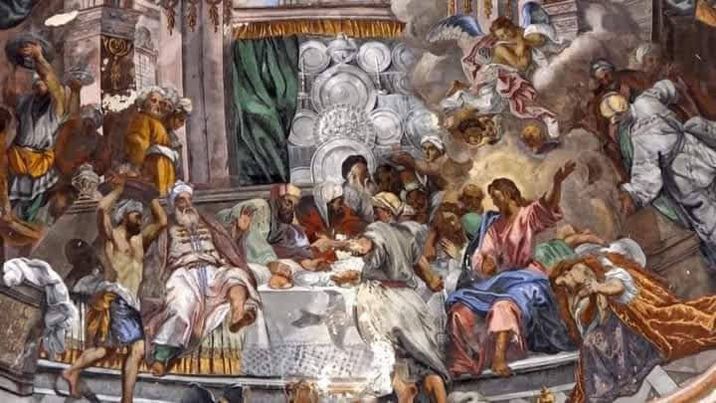La perspectiva, de una sola orden, tiene un aspecto vertical y la puerta, coronada por una ventana alta, está unida por elegantes ventanas ovales. En la zona del ático es importante la puerta con el tímpano roto, adornada con querubines y motivos florales de gusto rococó, y completada por el escudo de armas de la orden y un nicho con la estatua de San Benito. Un cuerpo lateral sostenía el campanario, ahora demolido. En el lado norte se abre una puerta de architrave del siglo XVIII, adyacente a un cuerpo añadido coevo. En su interior una gran sala con bóveda a todo centro lunettada. En la pared del ábside, sin el antiguo altar mayor de madera, la Ascensión, del siglo XVIII. Lo flanqueaban cuatro óvalos con escenas de la vida de Jesús. También se eliminaron dos lienzos mistilinares: La fuga a Egipto y Madonna con San Miguel Arcángel.
En la pared de la izquierda los dos altares estaban coronados por dos palas, Bautismo de Jesús y San Benito, mientras que a la derecha la Natividad y Santa Escolástica. En el ábside se conserva el fresco de la Magdalena que lava los pies a Jesús de Scipio Manni. En el altar mayor permanece la Transfiguración dentro de un marco ricamente tallado y dorado. El ambiente está envuelto por una escenográfica decoración en estuco con motivos vegetales y puttini, animada por grandes ventanas que inundan de luz.
